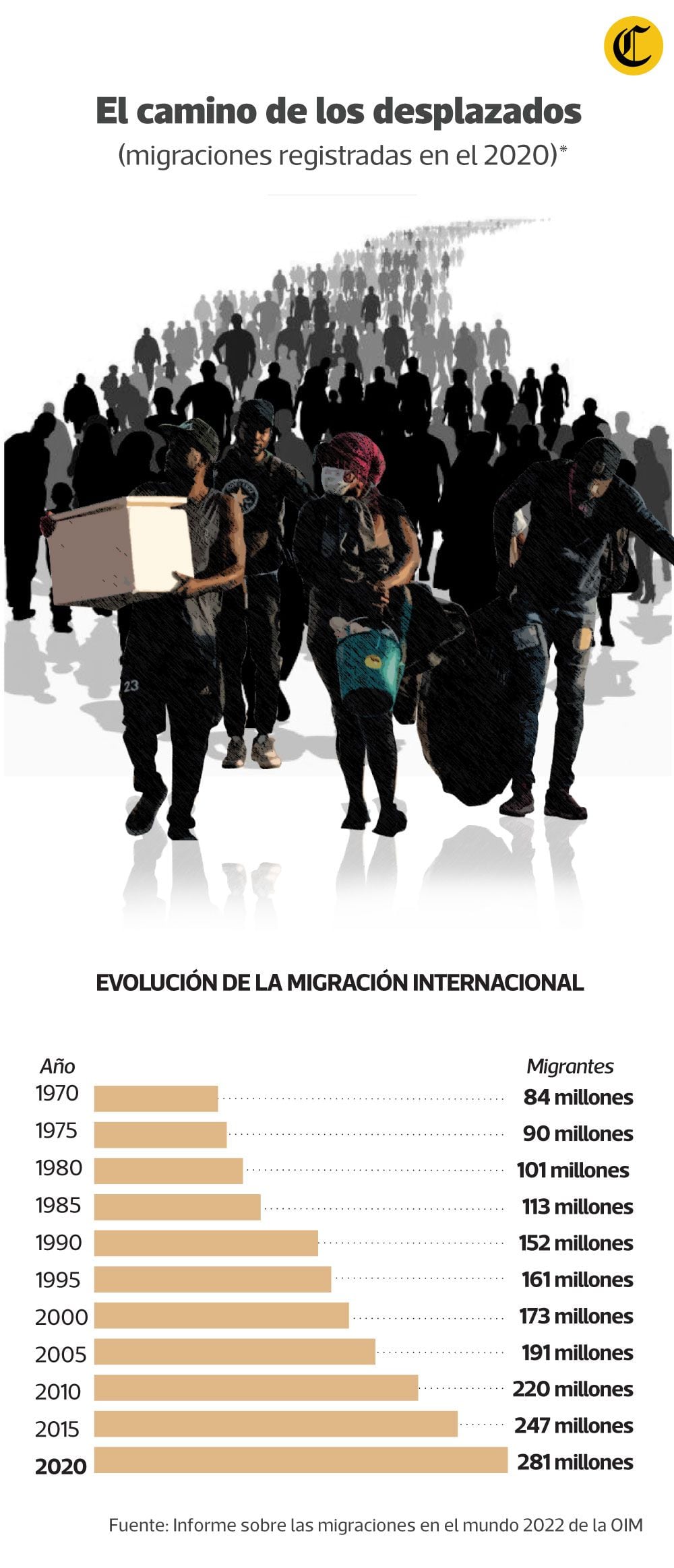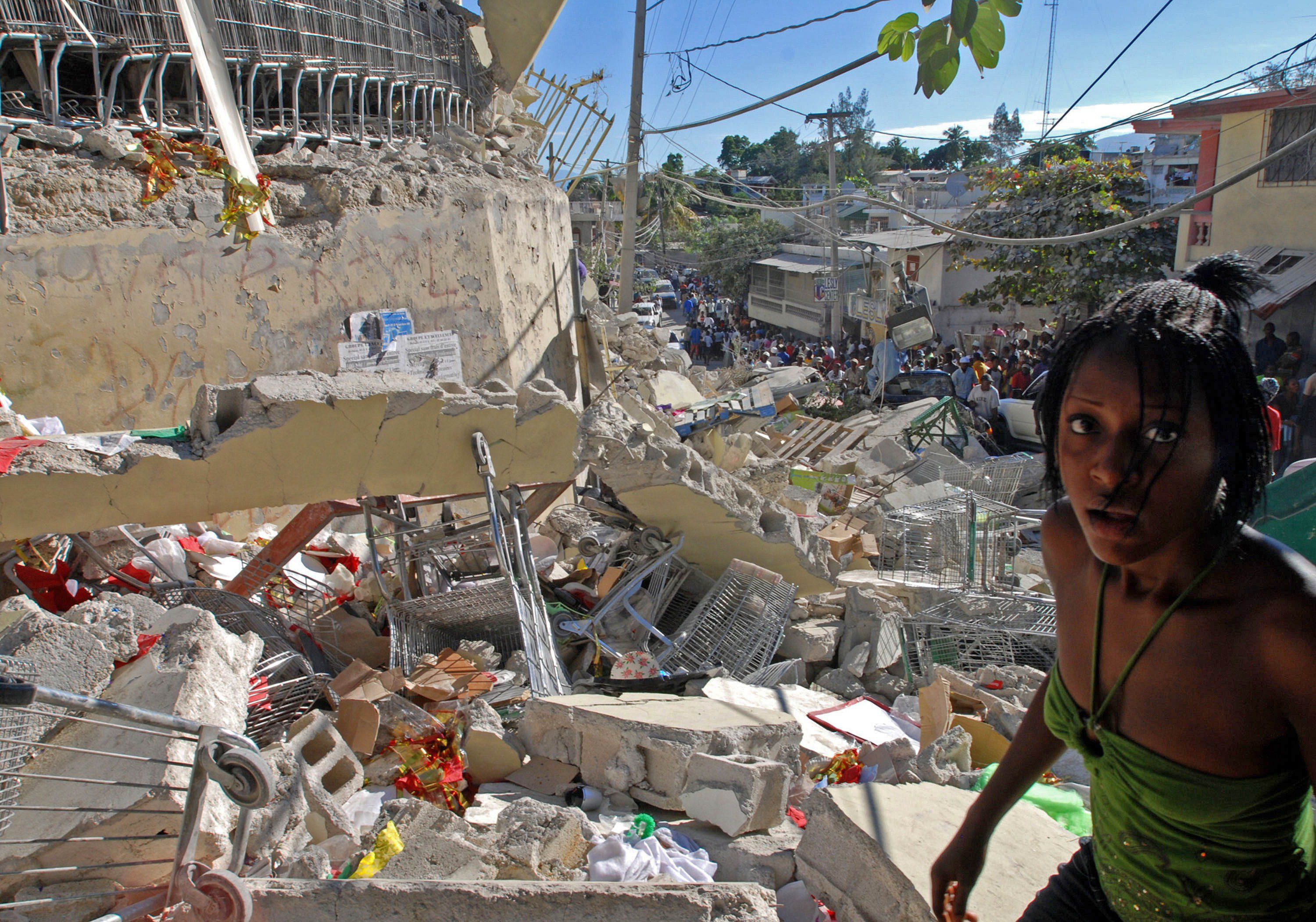The need to migrate to other countries to find a better life was, until last year, a reality for 3.6% of the world’s population: according to the International Organization for Migration, the world went from having 84 million international migrants in 1970 to 281 million. “We witness a paradox”, Says António Vitorino, director of the IOM, in reference to how the pandemic of the coronavirus He confined some and forced others to leave their homes.
READ ALSO | Migration to the US empties Venezuela’s some burgeoning oil capital
Those 281 million displaced people have faces: they are those who want to cross from France to the United Kingdom through the English Channel and die trying; are the thousands fleeing the Middle East and Africa in the direction of Poland, and put the border guards of Belarus who deploy barbed wire to repel them; or refugees traveling to the lesbos island to try to step on Europe at all costs. In all cases, they are faced with helplessness.
But this type of irregular migration – a term that refers to the movement of people who move outside the norms of the countries from which they depart, transit and are welcomed – not only overflows in those latitudes. For 59 and 14.8 million people, North America and Latin America and the Caribbean, respectively, they represent the hope of a better life. UNICEF says it well: “Lextreme violence, poverty and lack of opportunities”Are some of the causes – to which are added common and paramilitary violence, drug trafficking and the coronavirus pandemic – that force caravans to form that ignore borders and that understand that any place is better than the nation itself.
The majority of those who move in this part of the world see the United States as salvation – since 1970, it has been the main destination for migrants. The idea is not a novelty, only that the number of people who tried to enter the northern giant increased dramatically. In the book “The black mirror of the United States: Latin American migration”, by Alfredo Jalife-Rahme, the reasons are outlined. Or rather, a single reason. The Mexican political analyst points to the promises of the US president, Joe Biden, as a possible origin of the matter. “He promised to cancel all measures of Donald Trump [terminar con el polémico ‘Quédate en México’, por ejemplo] and a real chaos broke out because many Central Americans understood it as a sign that EE. UU. it was open to migrants”.
LOOK | Colombian mayors sign manifesto against xenophobia and support Venezuelans
In addition to Biden’s communication problem and the pandemic itself, we must also take into account the internal crises that countries are experiencing. Teófilo Altamirano, doctor in anthropology and expert in migratory processes, remember that “there are conventional factors that are known, such as corruption”. “But we also have to take into account the impact of climate change on forced migration. The effects are seen, to cite one case, in the Central American Dry Corridor [que va desde México, pasando por El Salvador, Honduras y Nicaragua, hasta Costa Rica]. Years of drought affect their corn and coffee production”. The equation results in poverty and the need to flee.
This is how we can explain the caravans that leave the Central American North Triangle in the direction of U.S. According to the EFE agency, during the first ten months of this year, Mexico contained immigration pressure by detaining 228,115 people and deporting 82,627, “figures that had not been recorded for fifteen years”. To this is added that, out of an average of 40 thousand refugee requests, 123 thousand have been presented so far this year.
And in the midst of all this, drug trafficking works like a saber. EFE notes that Los Zetas and the Gulf Cartel They are present to benefit from the lack of protection for migrants, a business that would generate between 3 and 5 million dollars a year. By 2012, the agency explains, $ 3,000 was being paid for coyotes to help cross the border from Mexico to the US; now, a kind of right of transit was added to the price that raises the registration to 15 thousand dollars.
The risk is very high because it is not enough to pay, but you have to be lucky. It would be worth remembering that, in January of this year, 19 charred bodies of migrants that ended in the midst of disputes between the Gulf Cartel and Northeast Cartel.


MORE IN THE WORLD | Undocumented caravan marches in Mexico City for Migrant Day
The crises in Venezuela and Haiti
Beatriz Padilla, director of the Institute for the Study of Latin American and the Caribbean and member of the Department of Sociology at the University of South Florida, puts the magnifying glass on the crises that the venezuelans –Produced by the dictatorial regime of Nicolas Maduro– and Haitians – whose origin can be traced from the 2010 earthquake to the assassination, in July, of their president Jovenel Moïse. It is a question, says the specialist, of very different migratory processes with regard to their results.
On the one hand, there are Haitians that, in general, “they were never welcome anywhere”. The racist conditions in force in Latin America Y U.S, added to their low grades, they got the worst of it. For example, your main destination is Dominican Republic, but they are not allowed to assimilate based on nationality. That is not the worst: in November, about thirty Haitian pregnant women who were being treated in hospitals in Santo Domingo Este, were detained and deported.
“First they went to Brazil, then to Chile, always being rejected. As time went by, they began to head further north, and now we find many of them on the northern border of Mexico and the southern border of the United States. In those places they are mistreated and deported. It’s nonsense, how are they going to bring them back to Haiti if your country can’t receive them?”.
Meanwhile, the United States Border Patrol he rode his horses to whip undocumented Haitians who camped on the border. Even the Vice President of the United States. Kamala Harris He asked to be treated with dignity when the pictures of the abuse were published in September.
The case Venezuelan It is different: the first to migrate were skilled labor, with university studies or with professions, so the Latin American response was not uniform. In addition, it helps them to speak Spanish. “Argentina treats them the same as Syrian refugees. Their relationship with Brazil did not start well, but they are already being geographically redistributed”, Says Padilla.
READ ALSO | Texas builds its own “wall” on the border with Mexico
And since October in Colombia, one of the countries that has most welcomed venezuelans, 1.2 million migrants began to be allowed to stay for ten years, a process that has led to the figures on migration being honest (it is now known that there are more than 1.8 million people).
Of course, in some places xenophobia was reported. “Suddenly in the Peru it felt like a wave of migration so strong that people started to react badly. The same happened in Ecuador or in the Caribe, places where they are not used to migration”.
Examples abound: last week, the Peruvian president Pedro Castillo tried and failed to expel 41 venezuelans from the country; In September, the xenophobic march organized in Iquique ended with the burning of tents and mattresses of Venezuelan migrants who slept in the streets. These types of expressions support the IOM World Migration Report 2020: “Migration is now a political issue”.
Another look at the matter
Adriana E. Younes, professor at the National University of Tucumán and migration specialist, writes on this matter:
“There are many causes that lead to the displacement of the population. If Venezuelan, the crisis responds to the scarcity of inputs for daily consumption, political instability, social violence and criminality. They migrated to South America (Brazil, Colombia, Peru, Chile and Argentina), as well as to Europe and the United States..
For the Central American case, the following can be identified: market violence, patriarchal violence, family reunification, political instability, poverty and inequality. This group of migrants is also the victim of extortion by organized crime and drug traffickers. It is precisely to avoid being recruited by these spurious organizations that they leave their places of origin.
It is pertinent to recall some indicators that account for the reality of the migrant population. According to IOM data, 64% of the unaccompanied Salvadoran minors deported in 2017 belonged to rural households; 51% of Guatemalans who received remittances from abroad lived in rural areas; and 43% of Hondurans who returned in 2015 came from rural locations.
It is interesting to observe the caravans of people heading north through various states. In this corridor not only are Central American populations integrated, but Haitian migrants and even those from Africa are incorporated.
The problem is complex and while the socio-political and economic conditions of the affected States continue, the conditions of inequality, vulnerability and instability will also persist.”.
RECOMMENDED VIDEO
IT MAY INTEREST YOU
- Mexico will require a visa from Venezuelans to prevent them from reaching the United States
- Relatives go to look for migrants who died in an accident in Mexico
- Migrant caravan arrives in Mexico City amid clashes
- “We want to know if he is alive or dead”: Desperate Guatemalan family after migrant accident in Mexico
- “Don’t close your eyes!”: The moving testimonies of the tragedy of the truck with migrants in southern Mexico
- “There were so many of us that we couldn’t even sit down”: how are the trips of migrants crammed into trucks like the one that overturned in Mexico
.

:quality(75)/cloudfront-us-east-1.images.arcpublishing.com/elcomercio/7KJAT6ZQZBHK3N6PSJCCAOI3DI.jpg)



:quality(75)/cloudfront-us-east-1.images.arcpublishing.com/elcomercio/W3U4HH3LFBH7DC4XXMIAIIDNBU.jpg)


:quality(75)/cloudfront-us-east-1.images.arcpublishing.com/elcomercio/GE3DAMBNGAZC2MJQKQYDAORRGY.jpg)
